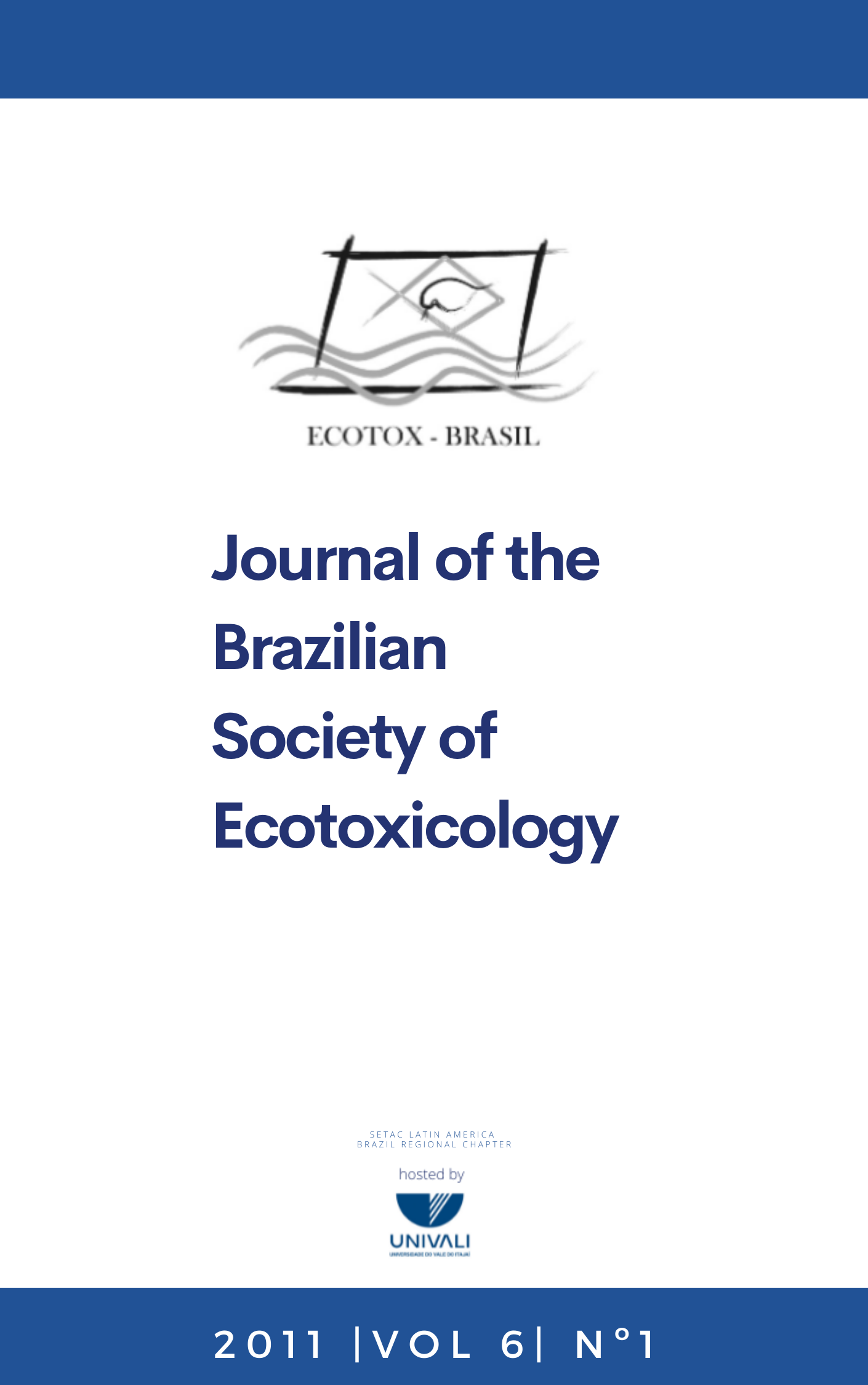Assessment of Heavy Metal Accumulation in Two Aquatic Macrophytes: a Field Study
Resumo
In order to assess the potential of two autochthonous plant species of Argentina as bioindicator and/or fitoremediator of metals, the accumulation of zinc, copper, cadmium and mercury in Schoenoplectus californicus and Ricciocarpus natans was studied. Total and labile contents of surface (SS) and near root sediments (NRS) were analyzed. Labile contents in NRS were lower than in SS, which was associated to the presence of S. californicus. Copper and zinc were positively correlated with total organic matter (TOM) whereas cadmium was not, suggesting low affinity of Cd to TOM. S. californicus presented the same pattern of distribution of those found in sediments (Zn > Cu > Cd). Bioaccumulation factors were close to (cadmium) or higher (zinc) than 1, while it was not conclusive for copper, revealing the S. californicus behaviour as an accumulator for zinc and indicator for cadmium. R. natans presented the highest metal levels among all studied matrix, with the presence of mercury. These findings showed the capacity of both S. californicus and R. natans to accumulate and remove heavy metals from sediments and water, which might be useful for phytoremediation programs.
Keywords: aquatic macrophytes, S. californicus, R. natans, heavy metals, phytoremediation, bioindicator.
Downloads
Downloads
Como Citar
Edição
Seção
Licença
Copyright © 2006 ECOTOX-BRAZIL
Copyright notice: It is a condition for publication that manuscripts submitted to this journal have not yet been published and will not be simultaneously submitted or published of elsewhere. By submitting a manuscript, the authors agree that copyright for their article is transferred to the Sociedade Brasileira de Ecotoxicologia (ECOTOX-Brazil) if and when the article is accepted for publication. The copyright covers the exclusive rights to reproduce and distribute articles, including reprints, photographic reproductions or any other reproduction of a similar nature, including translations. No part of this publication may be reproduced, stored in a retrieval system or transmitted in any form or by any means, electronic, mechanical, photocopying, recording or otherwise, without permission of the publisher.
Notice: While every effort is made by the JBSE, editors and editorial board to see that no inaccurate or misleading data, opinions or statements appear in this journal, they wish to make it clear that the contents of the articles and advertisements published herein are the sole responsibility of the contributors or advertisers concerned. Accordingly, the JBSE, the editorial board and editors and their respective employees, officers and agents accept no responsibility or liability whatsoever for the consequences of any inaccurate or misleading data, opinion or statement.




